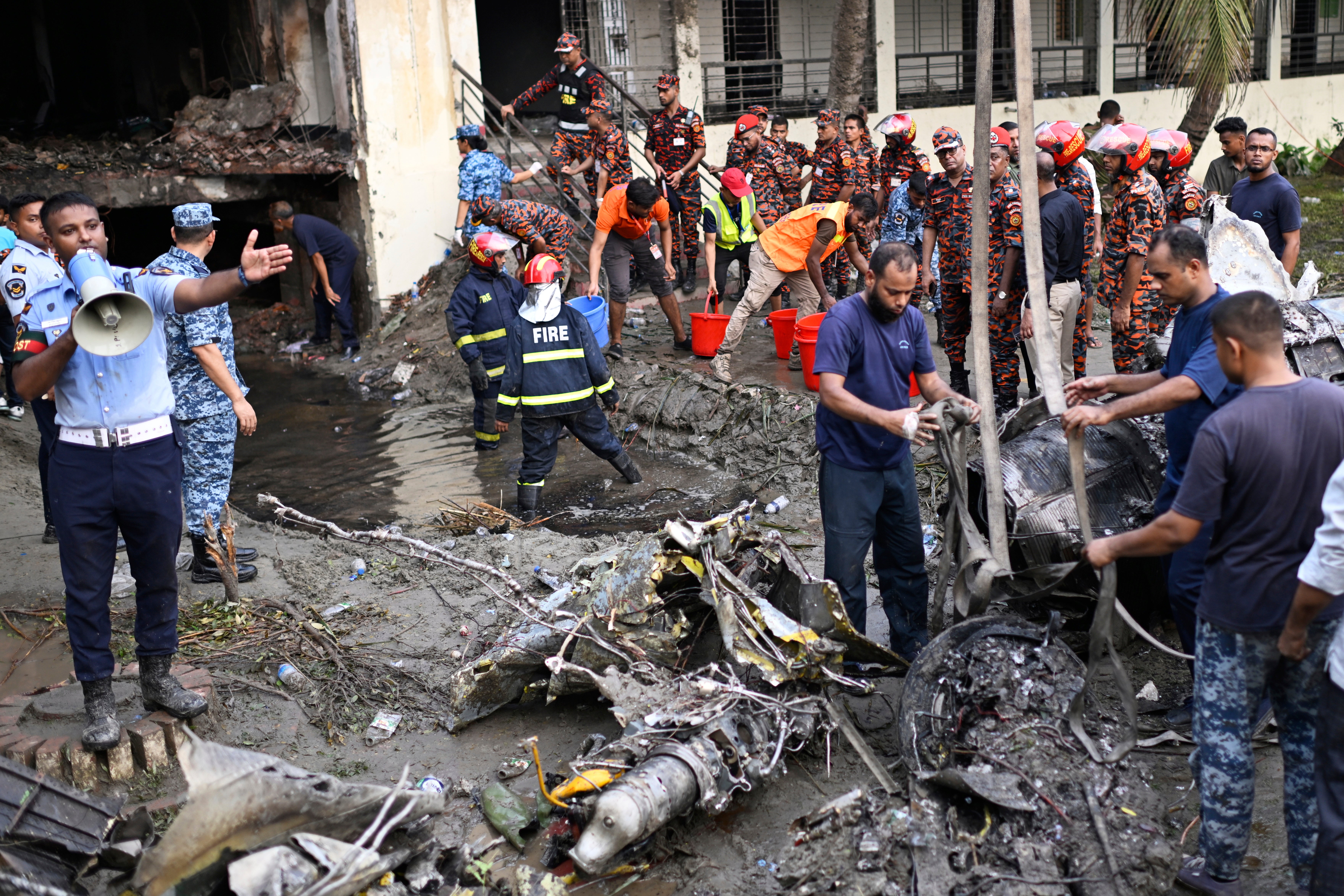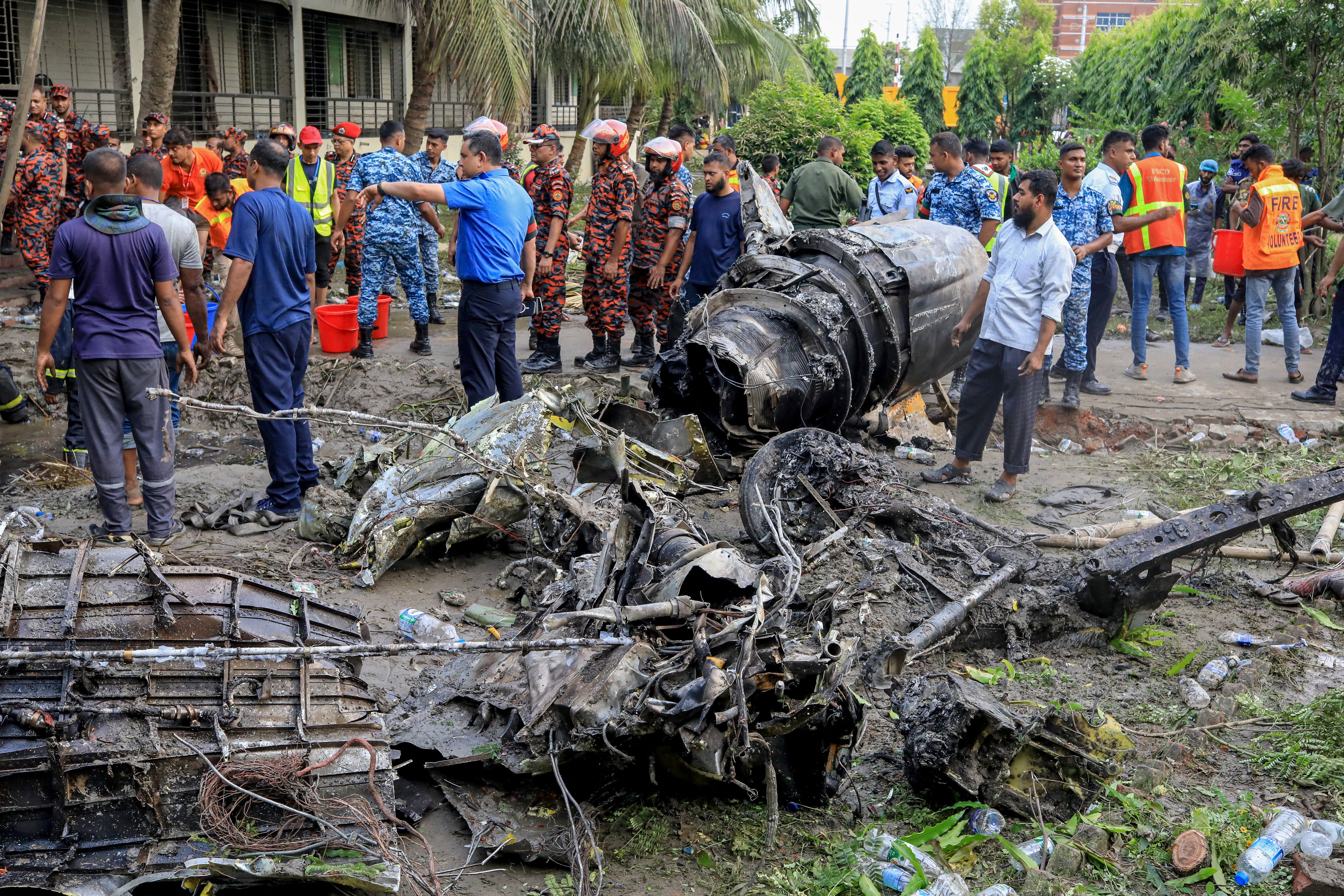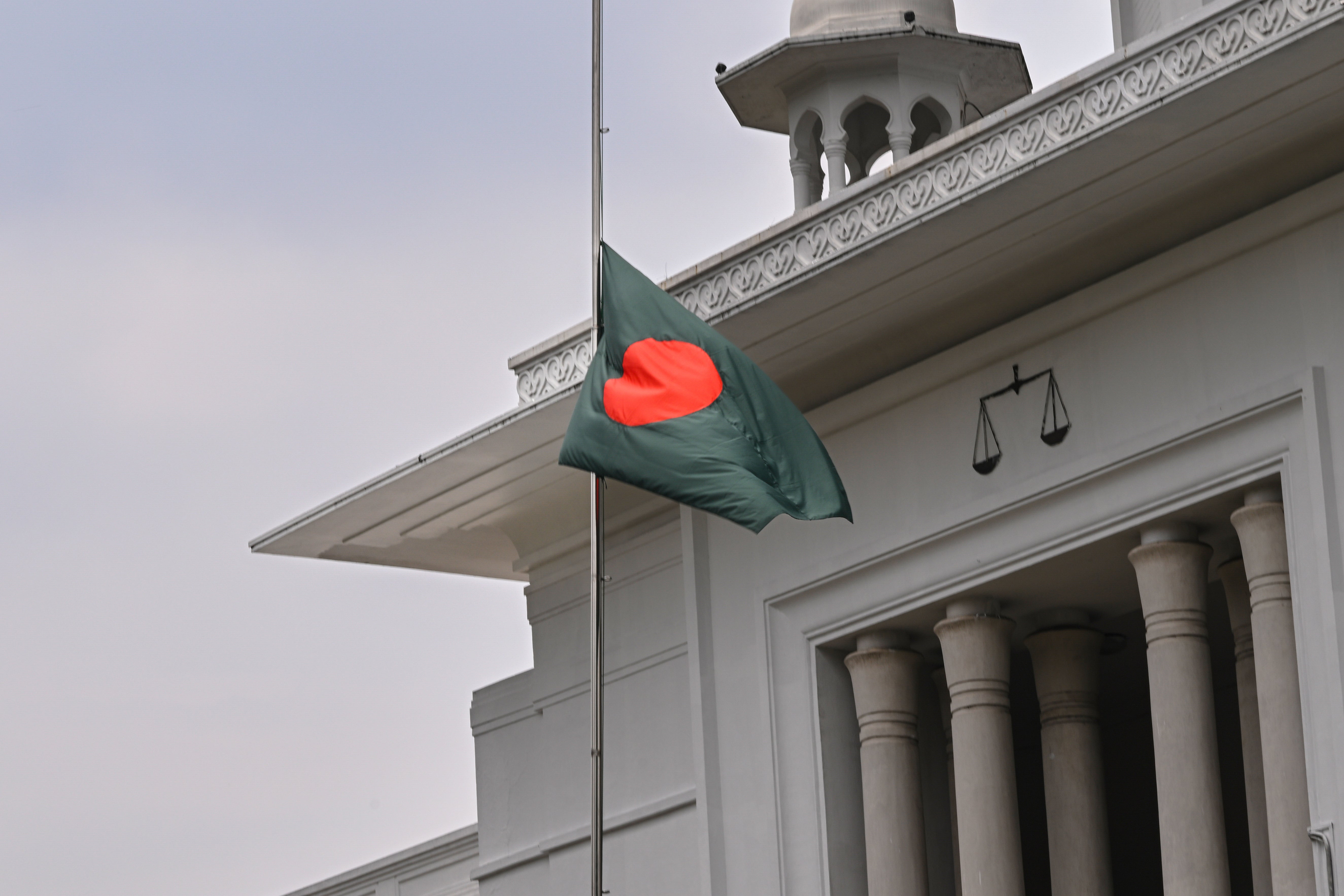At least three teachers died trying to get young children to safety after a fighter jet crashed into a school in Bangladesh’s capital on Monday, killing at least 31 people in one of the worst aviation disasters in the country’s history.
So far 25 school pupils, most of them under the age of 12, have been reported killed in the crash which saw a Bangladesh Air Force training aircraft come down on top of a school building in Dhaka's densely populated Uttara neighbourhood.
The members of the school’s faculty who were killed include Mahrein Chowdhury, a 46-year-old school administrator, who sustained 80 per cent burns while trying to escort students out of the Hyder Ali Hall building at the school when the F-7 BGI crashed into the school, about 12 minutes after its takeoff from a nearby military facility.
Chowdhury was escorting students to meet their parents when the aircraft crashed into the gate of the building. Despite being severely burned herself, Chowdhury helped take 20 students to safety. Hours later, she succumbed to her injuries in hospital.
"She didn't get out first from her building when it caught fire, instead tried to get as many students out but ended up suffering 100 per cent burns, said her brother, Munaf Mojib Chowdhury. He recalled his elder sister as a mother-like figure who had helped to raise him.
Mahrein Chowdhury was buried on Tuesday in her family graveyard beside her parents.
Two other teachers are known to have succumbed to their burn injuries, a senior teacher who was present in the next building at the time of the disaster told The Independent.
The crash took place shortly after 1pm when students were leaving exams and teachers were busy checking papers, according to the senior teacher, who asked not to be named because he was not authorised to speak on behalf of the school.
He recalled hearing a loud sound – comparing it to a bomb blast – when the aircraft first crashed into a school building.
"The school is near an air force base, so we are used to the noise of fighter aircraft, but this was extraordinarily loud. At first glance, I couldn't spot anything, but seconds later, a thick stream of smoke started coming out of the building," he recalled.
The senior teacher saw dozens of injured students – mostly those with minor injuries – running toward the school's medical room on the lower floor, while many other pupils were trapped under debris on the second floor.
Army personnel stationed nearby rushed to the school as the fire from the blast intensified and spread rapidly about 15 minutes after the crash, leading to more fatalities. Ambulances and a helicopter arrived at the scene shortly after.

"As the fire spread, we were asked to move toward the playing field. Everyone was evacuated to the grounds to make space for the ambulance and the helicopter to take the pupils to the nearest hospitals," the senior teacher said. "Everyone who could help, including teachers, staff and pupils, jumped in to the rescue without thinking twice."
Doctors said late on Monday that about two dozen people remained in a critical condition, out of a total 165 injured. A blood donation camp has been opened at a specialised burns hospital where most of the injured were being treated.
Twenty bodies have been handed over to their families, with some needing DNA matching after they were charred beyond recognition. Many relatives waited overnight at the burns hospital while identification processes were carried out.
Nasima Begum was among the mothers whose children were admitted to the hospital after suffering severe burns in the crash. Her son, who studies in grade seven, was playing when the crash happened, Ms Begum told The Independent. "He's completely burned," she said.
"It has been more than 24 hours, his state is critical. The doctors are not saying anything positive. This is the second hospital we have had to take him," she said, as she prayed to Allah to save her son.

Rubina Akter said her son Raiyan Toufiq had a miraculous escape after his shirt caught fire when he was on a staircase. "He sprinted to the ground floor and jumped on the grass to douse it," she told Reuters. "He tore his shirt and vest inside which saved him from severe burns."
Another student who had already left the classroom after finishing his exam told BBC Bangla: "My best friend, the one I was in the exam hall with, he died right in front of my eyes."
Rescue workers continued to scour the charred buildings for debris on Tuesday as distressed residents of the area looked on.
Abul Hossain mourned his nine-year-old daughter after saying his final goodbye on Monday night. "I took her to school yesterday morning like every day. I had no idea it would be the last time I would be seeing her," he said.
The pilot, Flight Lt Mohammed Toukir Islam, who died in the crash, made "every effort to divert the aircraft away from densely populated areas toward a more sparsely inhabited location," the military said.
The Chinese-made F-7 BGI training aircraft experienced a "technical malfunction" moments after takeoff from the AK Khandaker air force base at 1.06 pm local time on Monday, the military added.
It was the pilot's first solo flight as he was completing his training course. It remained unclear if he managed to eject before the jet hit the building. The Bangladesh air force said it has launched a formal investigation.
The government declared Tuesday was a day of mourning, with flags at half-mast and special prayers at all places of worship as hundreds of students protested near the site of the crash. The Milestone school is located about 11km from the air force base in a densely populated area near a metro station and numerous shops and homes.

The protesting students transparency over the numbers and identities of the dead and injured, compensation for their families, and an immediate halt to the use of "outdated and unsafe" training aircraft by the Bangladesh Air Force. They chanted slogans and accused security officials of beating them and manhandling teachers.
The students angrily confronted two senior government advisers who arrived to visit the scene, forcing them to take cover for six hours inside the school campus before additional security forces arrived and escorted them out.
Scores of students suffered injuries after police charged them with batons after they broke through security barricades and entered the Bangladesh Secretariat complex, elsewhere across the capital. Security fired tear gas and used stun grenades to disperse the crowd.
Monday’s plane crash was the deadliest aviation incident in the Bangladeshi capital in decades. In 2008, another F-7 training jet crashed outside Dhaka, killing its pilot, who had ejected after he discovered a technical problem.
Bangladesh’s F-7 is a modern variant of China’s Chengdu F-7, itself modelled on the Soviet MiG-21. While considered outdated by global standards, it remains in service due to its cost-effectiveness and suitability for pilot training and limited combat roles. Its production ceased after China delivered the last of 16 units of F-7 BGIs to Bangladesh in 2013.
The incident comes as neighbour India is still grappling with the world's worst aviation disaster in a decade after an Air India plane crashed into a medical college hostel in Ahmedabad city in Gujarat last month, killing 241 of the 242 people on board and 19 on the ground.







